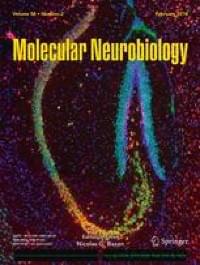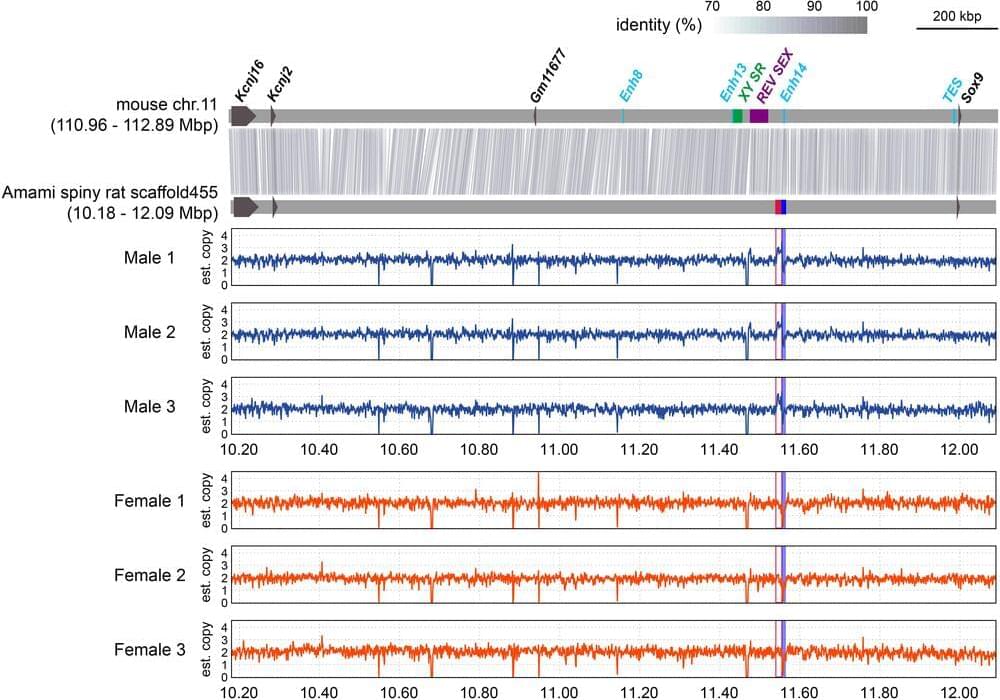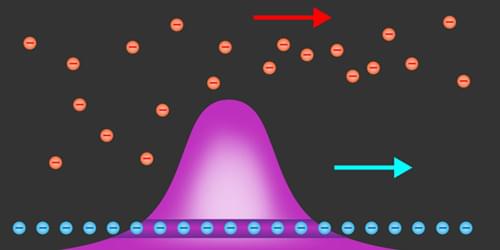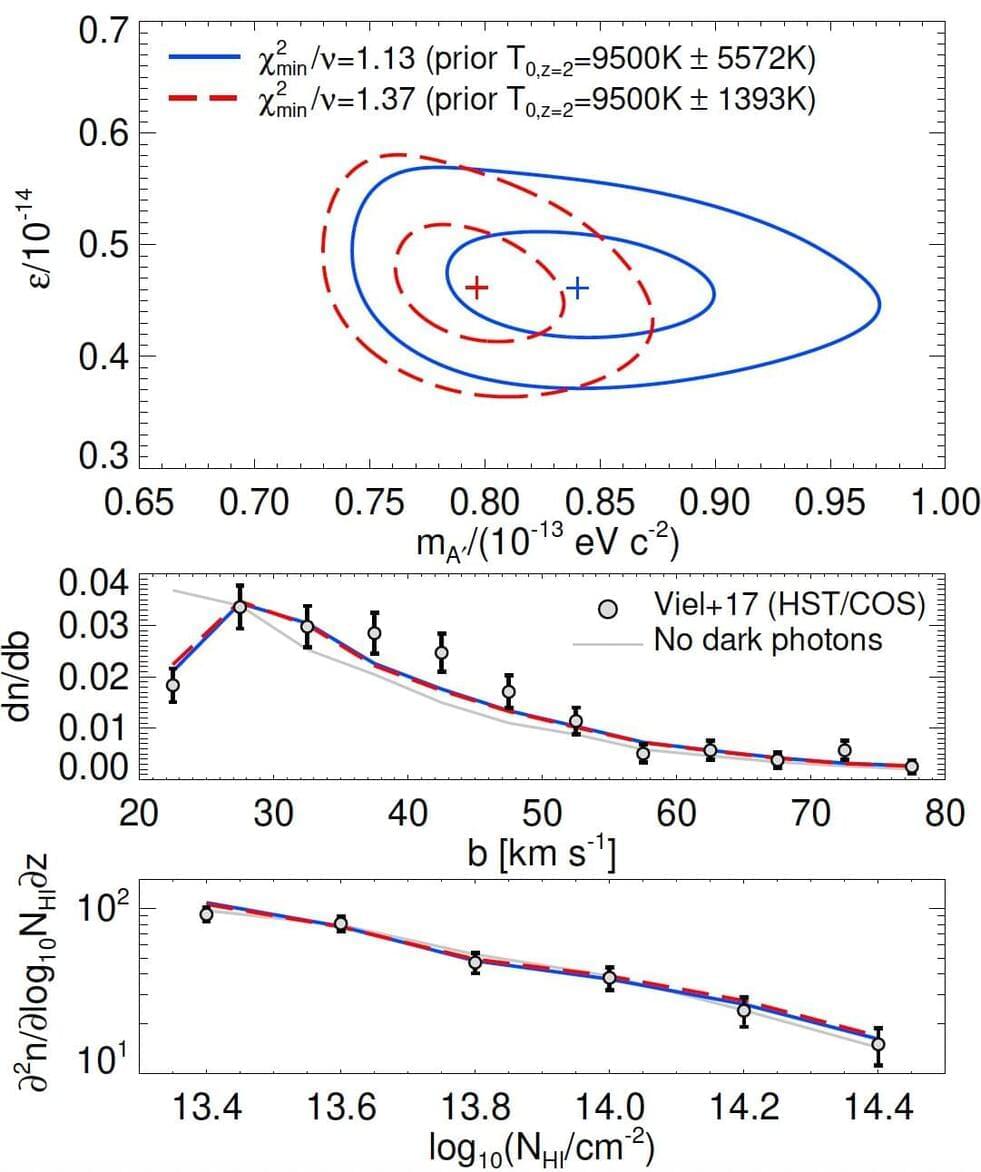Page 2903
Dec 7, 2022
Cilia in the Striatum Mediate Timing-Dependent Functions
Posted by Saúl Morales Rodriguéz in categories: internet, neuroscience
Ablation of primary cilia in the striatum did not affect the object recognition memory, as evidenced by the more time mice spent with the novel object than the old object (Fig. 4e, f). Similarly, in the novel location recognition assay, IFT88-KO spent more time with the novel location than the old location (Fig. 4g, h), indicating a normal spatial memory. In addition, the contextual memory, measured using the fear conditioning test, was intact in the IFT88-KO mice, as revealed by the similar freezing time on the test day compared with the control mice (Fig. 4i).
The expression of the immediate-early gene cFos was used as a molecular marker of neural activity. We examined cFos immunoreactivity (number of cFos-positive cells) in structures that are parts of striatal circuits and those known to project to or receive projections from the striatum (Fig. 5a, b). First, the rostral dorsal striatum, but not the caudal striatum of IFT88-KO mice, exhibited a significant decrease of cFos immunoreactivity (Fig. 5c, d). Within the basal ganglia circuit, there was a trend for cFos immunoreactivity reductions in the output regions (SNr and the GPm), but not in the nuclei of the indirect pathway structures (lateral globus pallidus and subthalamic nucleus) (Fig. 5c, d). The main input regions to the striatum include the dopaminergic neurons of the substantia nigra pars compact (SNc) and the glutamatergic neurons of the cortices.
Dec 7, 2022
Turnover of mammal sex chromosomes in the Sry-deficient Amami spiny rat is due to male-specific upregulation of Sox9
Posted by Saúl Morales Rodriguéz in category: sex
Mammalian sex chromosomes are highly conserved, and sex is determined by SRY on the Y chromosome. Two exceptional rodent groups in which some species lack a Y chromosome and Sry offer insights into how novel sex genes can arise and replace Sry, leading to sex chromosome turnover. However, intensive study over three decades has failed to reveal the identity of novel sex genes in either of these lineages. We here report our discovery of a male-specific duplication of an enhancer of Sox9 in the Amami spiny rat Tokudaia osimensis, in which males and females have only a single X chromosome (XO/XO) and the Y chromosome and Sry are completely lost. We performed a comprehensive survey to detect sex-specific genomic regions in the spiny rat. Sex-related genomic differences were limited to a male-specific duplication of a 17-kb unit located 430 kb upstream of Sox9 on an autosome. Hi-C analysis using male spiny rat cells showed the duplicated region has potential chromatin interaction with Sox9. The duplicated unit harbored a 1,262-bp element homologous to mouse enhancer 14 (Enh14), a candidate Sox9 enhancer that is functionally redundant in mice. Transgenic reporter mice showed that the spiny rat Enh14 can function as an embryonic testis enhancer in mice. Embryonic gonads of XX mice in which Enh14 was replaced by the duplicated spiny rat Enh14 showed increased Sox9 expression and decreased Foxl2 expression. We propose that male-specific duplication of this Sox9 enhancer substituted for Sry function, defining a novel Y chromosome in the spiny rat.
Dec 7, 2022
Uncovering an Odd Form of Superconductivity
Posted by Saúl Morales Rodriguéz in category: innovation
An innovative technique will allow scientists to probe superconductivity involving an unusual type of electron pairing called odd-frequency pairing.
Dec 7, 2022
Enhanced Emission for Improved Electron Spectroscopy
Posted by Saúl Morales Rodriguéz in category: innovation
Researchers have demonstrated a new electron field emitter with unprecedented brightness and spectral purity, promising a breakthrough in electron microscope spectroscopy.
Dec 7, 2022
Energy Evolution of Electrons Measured Noninvasively
Posted by Saúl Morales Rodriguéz in categories: biotech/medical, evolution
Accelerating particles to relativistic speeds typically requires particle accelerators that are many kilometers in length. Miniature particle accelerators a few tens of centimeters long or smaller also exist. These so-called laser-plasma accelerators are being tested in research facilities for future use in hospitals, where scientists hope the accelerators could generate x rays for cancer diagnostics and treatment. In these devices, particles are accelerated by short laser pulses, so scientists have only a few femtoseconds to track the particles’ evolving properties. Now Simon Bohlen of the German Electron Synchrotron (DESY) and colleagues experimentally demonstrate a technique to measure the energy evolution of an electron bunch inside a laser-plasma accelerator [1]. The team hopes that the technique could be used to improve laser-plasma accelerators and ready them to generate x rays for medical applications.
For their demonstration Bohlen and colleagues used a phenomenon called Thomson scattering, which is the scattering of photons by electrons. They split in two the laser beam used to accelerate the electrons, using one part for normal electron acceleration and the other part to create a Thomson laser—a beam of photons the accelerated electrons could scatter. They then overlapped the Thomson laser and the accelerated electrons such that the two interacted at 20 locations over a 400- m distance. The team measured the energy of the photons scattered during these interactions using an x-ray detector. From these measurements, the team reconstructed the energy evolution of the electrons over most of the accelerator length without destroying the electron beam.
Dec 7, 2022
Metal-to-Insulator Transition Similar to Water-to-Ice
Posted by Saúl Morales Rodriguéz in category: materials
A textbook theory for the freezing of water also explains the growth of a new phase in a more complicated phase transition of a different material.
When water freezes, the ice forms first in “nuclei”—tiny seed crystals that can grow or shrink and survive only if they reach a minimum size—at least according to the textbook theory. Researchers have now shown that this understanding also applies to a more complicated phase transition in vanadium dioxide (VO2), a material whose electrical properties and crystal structure both change at its so-called metal-to-insulator phase transition [1]. The team measured the threshold size for the “seeds” that drive this transition and demonstrated a new technique for studying crystal structure transitions. The result suggests that the classical nucleation theory is valid for a range of materials that are important in areas such as catalysis, lasers, and alloy and ceramic manufacturing.
Place a bucket of purified water in a subfreezing-temperature environment, and tiny ice seeds will start forming. Many will quickly dissolve, but those that are larger than a certain threshold size will grow and eventually merge to make a single block of ice. This view of crystallization, associated with classical nucleation theory, has been well accepted for the water–ice transition. Junqiao Wu of the University of California, Berkeley, and his colleagues wanted to test whether the same nucleation phenomenon is at play in VO2 when it makes a transition from one crystalline structure to another.
Dec 7, 2022
A transformable robot with an omnidirectional wheel-leg
Posted by Saúl Morales Rodriguéz in categories: robotics/AI, transportation

Researchers at Worcester Polytechnic Institute recently created OmniWheg, a robotic system that can adapt its configuration while navigating its surrounding environment, seamlessly changing from a wheeled to a legged robot. This robot, introduced in an IEEE IROS 2022 paper, pre-published on arXiv, is based on an updated version of the so-called “whegs,” a series of mechanisms design to transform a robot’s wheels or wings into legs.
“Quadruped and biped robots have been growing in popularity, and the reason for that might be the search for ‘anthropomorphization’ that the general audience commonly engages in,” Prof. Andre Rosendo, one of the researchers who developed the robot, told TechXplore. “While ‘being capable of going everywhere we go’ sounds like an exciting appeal, the energetic cost of legs is very high. We humans have legs because that is what evolution gave us, but we wouldn’t dare to create a ‘legged car,’ as we know that this ride wouldn’t be as comfortable or energy efficient as a wheeled car ride.”
Continue reading “A transformable robot with an omnidirectional wheel-leg” »
Dec 7, 2022
Study explores the possibility that dark photons might be a heat source for intergalactic gas
Posted by Saúl Morales Rodriguéz in categories: cosmology, physics
Gas clouds across the universe are known to absorb the light produced by distant massive celestial objects, known as quasars. This light manifests as the so-called Lyman alpha forest, a dense structure composed of absorption lines that can be observed using spectroscopy tools.
Over the past decades, astrophysicists have been assessing the value of these absorption lines as a tool to better understand the universe and the relationships between cosmological objects. The Lyman alpha forest could also potentially aid the ongoing search for dark matter, offering an additional tool to test theoretical predictions and models.
Researchers at University of Nottingham, Tel-Aviv University, New York University, and the Institute for Fundamental Physics of the Universe in Trieste have recently compared low-redshift Lyman alpha forest observations to hydrodynamical simulations of the intergalactic medium and dark matter made up of dark photons, a renowned dark matter candidate.
Dec 7, 2022
Hearing is believing: Sounds can alter our visual perception
Posted by Saúl Morales Rodriguéz in category: neuroscience
Perception generally feels effortless. If you hear a bird chirping and look out the window, it hardly feels like your brain has done anything at all when you recognize that chirping critter on your windowsill as a bird.
In fact, research in Psychological Science suggests that these kinds of audio cues can not only help us to recognize objects more quickly but can even alter our visual perception. That is, pair birdsong with a bird and we see a bird—but replace that birdsong with a squirrel’s chatter, and we’re not quite so sure what we’re looking at.
“Your brain spends a significant amount of energy to process the sensory information in the world and to give you that feeling of a full and seamless perception,” said lead author Jamal R. Williams (University of California, San Diego) in an interview. “One way that it does this is by making inferences about what sorts of information should be expected.”

















